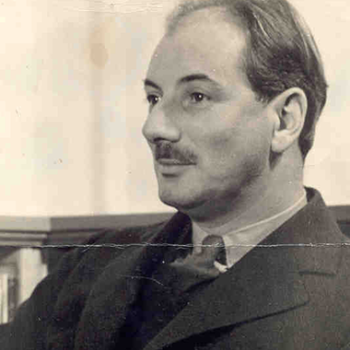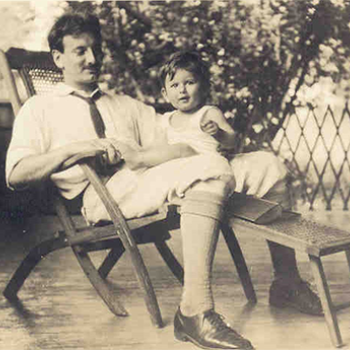About Lewis Mumford
Urban planner, historian, sociologist, local advocate, and architectural critic, widely recognized as one of the greatest urbanists of the 20th Century
Urban planner, historian, sociologist, local advocate, and architectural critic, widely recognized as one of the greatest urbanists of the 20th Century

A lifelong opponent of large-scale public works, much of his writings concern the effect of buildings on the human condition and the environment. Most notable of such works was The City in History, which received the National Book Award in 1961. Mumford taught at a number of prestigious universities, and served for over 30 years as architectural critic for the New Yorker. In his later years, he was awarded several distinguished honors, including the United States Medal of Freedom and Knight of the Order of the British Empire.
Born in Flushing, NY, on October 19, 1895, Mumford was introduced to nearly every part of Manhattan on weekend walks with his German grandfather. By the time he was 20, he was systematically exploring the City on foot, making notes on its neighborhood life, studying its buildings, bridges, and street plans, and taking specimens for an amateur geological survey of Manhattan. He studied at City College, Columbia University, and the New School, concentrating on subjects that interested him rather than those required for a degree.
Mumford published his first book, The Study of Utopia, in 1922 and became the editor of The American Caravan in 1927. During those years, he co-founded the Regional Planning Association of America. By the 1950s, he was battling with Robert Moses over plans to put a roadway through Washington Square Park, and other massive urban renewal projects he feared would destroy the quality of the City.

A lifelong humanitarian and advocate, Mumford believed in speaking out against social injustices. In his New Republic article, "Call to Arms" (1938), and his books Men Must Act (1939) and Faith for Living (1940), Mumford urged the United States to pledge its help to other democracies in repelling attacks by totalitarian powers. After the Second World War, in which his son was killed, Mumford spoke out against the atomic bomb at Stanford University, North Carolina State University, and the University of Pennsylvania. He gave the Bampton Lectures at Columbia University in 1951. In the early 1960s, Mumford protested against U.S. involvement in Vietnam, and testified before the U.S. Senate Subcommittee on the negative impacts of urban renewal.
Among his tremendous achievements, Mumford was instrumental in preparing planning reports for cities and towns from Honolulu to Oxford, England. He died at his home in Amenia, New York, on January 26, 1990. The University of Pennsylvania Library's Lewis Mumford Collection is the official keeper of his letters and papers, and it maintains a website that includes a bibliography of Mumford's writings as well as a listing of other major repositories of Mumford materials.
Monmouth University Library -- Lewis Mumford Collection - Sponsored by Monmouth University, this web site is dedicated entirely to the works of Lewis Mumford. It includes biographical information, and Mumford's private library and art collections.
Creative Quotations - This site includes numerous creative quotes by Mumford.
A Bibliography of Lewis Mumford - A complete record of the work of Lewis Mumford in all its published forms, e.g., books and pamphlets, letters to the editor, book reviews ... Edited by S. Newman, revised edition edited by R. Wojtowicz December 2000.
A Brief Biography of Lewis Mumford (1895-1990) The biography and all the books listed chronologically by Eugene Halton
The City": significant sequences and the main passages from Lewis Mumford's commentary Made in New York and sponsored by the American Institute of Planners, "The City" was intended for screening at the 1939 New York World Fair. The presentation and a video abstract from planum's section "archive/movies"